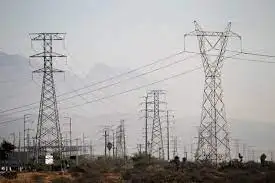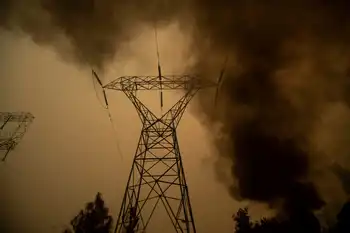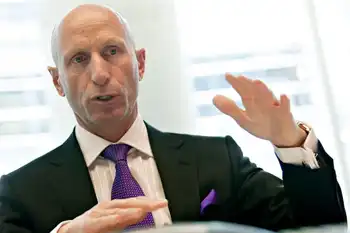San Antonio on center stage of nuclear debate
By Pacific Business News
High Voltage Maintenance Training Online
Our customized live online or in‑person group training can be delivered to your staff at your location.

- Live Online
- 12 hours Instructor-led
- Group Training Available
There hasn’t been a new nuclear power reactor constructed in the U.S. since the 1970s, but now there are five potential units on the horizon, including two that would be located in South Texas supplying power for CPS Energy — which serves San Antonio and Bexar County.
Former New Jersey Gov. Christine Todd Whitman came to San Antonio recently as co-chair of a group advocating for the expansion of nuclear energy nationwide and acknowledged the Alamo CityÂ’s central role in the debate.
“Everyone is watching (San Antonio),” Whitman says. “What happens here will set the pace for nuclear energy elsewhere. It will be very important.”
Whitman, who served as administrator of the Environmental Protection Agency under President George W. Bush, is co-chair of the Clean and Safe Energy Coalition (CASEnergy), which was founded to build support around the country for new nuclear plant construction.
In San Antonio, CPS Energy is considering a proposal by NRG Energy Inc., its partner in the South Texas Project, to add two 1,350 mega-watt nuclear-fueled electrical generating units to the two existing units. The South Texas Project is located 90 miles southwest of Houston in Matagorda County.
Between now and September, there will be numerous public hearings and a public education-and-input process leading up to a vote by the CPS Energy Board of Trustees on the staff recommendation related to the proposed nuclear power units. If the board approves the expansion plans, the proposal will go before the San Antonio City Council for a final decision sometime this fall.
“We know there is strength in numbers and we are here to provide support for when it is time to make the hard decisions,” Whitman says. “We want to help educate the public before the naysayers start using the scare tactics left over from the ’70s.”
Whitman says the growing demand for energy, especially in a state like Texas, is the driving force behind the push for new nuclear plants. Also fueling that push is the desire for more “clean energy” sources that don’t contribute to the problem of global warming.
Nationwide there will be a 20 percent increase in energy demand over the next 10 years and a 40 percent increase in Texas, Whitman says. At present, the nation gets most of its energy from coal-fired power plants while only about 20 percent comes from nuclear plants. As the demand for energy increases, more nuclear facilities will have to be built just to keep nuclear energyÂ’s contribution at the 20 percent level, she adds.
Mike Kotara, vice president of energy development for CPS, says as aging coal plants reach the end of their life cycle, they will need to be replaced and nuclear plants have been deemed to have the lowest cost to consumers.
“The reason our energy bills are low in San Antonio is because we get so much energy from those plants (South Texas Project),” Kotara says. “Nuclear energy has the highest likelihood to be the lowest cost source of energy over the long-run.”
Still, the initial price tag is not cheap, with cost estimates for constructing the two new nuclear facilities ranging from $10 billion to $13 billion, depending on financing costs. But CPS notes that the project has been deemed eligible for possible receipt of some of the $18.5 billion in government loan guarantees that are available.
Whitman says the high cost is a concern, but nuclear energy is still the best option.
“It is going to cost no matter what,” Whitman says. “But it is better to pay that cost up front and amortize it and spread it out over time.”
Whitman says the high cost of building new nuclear plants is mainly due to the stringent safety and security regulations and the highly technical nature of the process.
Despite nuclear power’s reputation as a clean energy source that produces no greenhouse gases that contribute to global warming, many environmental and consumer groups are still opposed to any expansion of nuclear energy because of the unresolved problem of what to do with nuclear waste. Public Citizen, a consumer advocacy group based in Washington, D.C., recently issued a report outlining what the group considers to be “Nuclear Energy’s Fatal Flaws.”
“Nuclear power is not a clean energy source,” the report states. “In fact, it produces both low and high-level radioactive waste that remains dangerous for several hundred thousand years.
“Currently, over 2,000 metric tons of high-level radioactive waste and 12 million cubic feet of low-level radioactive waste are produced annually by the 103 operating reactors in the United States,” the Public Citizen report continues. “No country in the world has found a solution for this waste, and building new nuclear plants would mean the production of much more of this dangerous waste with no where for it to go.”
Whitman acknowledges that a long-term solution is needed to deal with the nuclear waste issue, but for now the waste is being stored safely and securely on-site at the nuclear plants. “It is not ideal and I think there should be one national repository, but the current system is good for another 30 years at least,” Whitman says.











